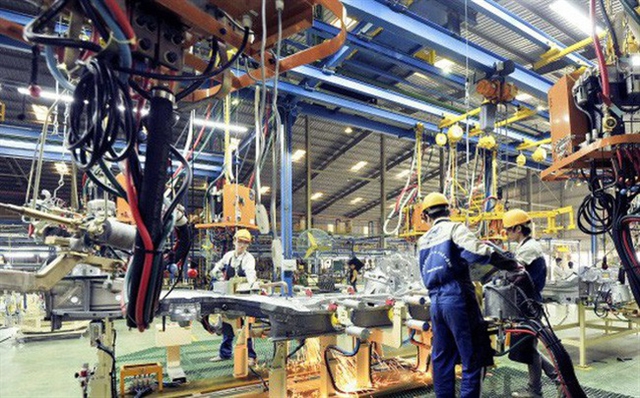[ad_1]

HÀ NỘI The Ministry of Industry and Trade (MoIT) is drafting the National Strategy on Industrial Development through 2030 with a vision to 2045 to submit to the Government in the next quarter.
Nguyễn Văn Hội, Director of the MoIT’s Institute of Industrial Strategy and Policy Research, was speaking at a conference to gather recommendations from experts held in Hà Nội on Friday.
The conference was told industries would be selected to get priorities for development in the strategy should be helping the country meet approved industrialisation and modernisation targets.
Việt Nam’s industry is forecast to contribute 40 per cent to the national GDP by 2030, of which processing and manufacturing will make up 30 per cent. The industrial growth rate will average more than 8.5 per cent, of which the processing and manufacturing industry will see a rise of 10 per cent annually.
Dr Dương Đình Giám from the Vietnam Economic Science Association, said the strategy should include plans to concentrate national resources to build and develop a number of heavy industries, which could compete internationally and deeply involve in global value chains.
These industries would be a basis for the industrial development in the 2030-45 period, helping Việt Nam become a modern industrial country.
“The strategy should focus on developing industries which have high value-added products and large export value, and gradually reduce industries which use mining resources or unskilled labours,” Giám said.
Under the strategy, it is also necessary to create markets for supporting industries to develop and use high technology. Giám said that to promote the high tech application, the Government must focus on solving the current fragmented production.
“The small scale production is causing the country difficulties to apply scientific and technological advances to create a rich source of raw materials and agricultural products at low cost, high quality and ensuring hygiene and food safety requirements,” he said.
The Government should also take measures to better the linkage between production and consumption chains for sustained development, Giám added, suggesting a pilot model of linkage between agricultural cooperatives and processing enterprises in some places had so far gained good results and should be scrutinised for duplication.
Notably, he said, enterprises needed fast legal support from Government and associations when they face trade disputes in the international market.
According to Phạm Tất Thắng, MoIT’s senior industrial specialist, the Vietnamese economy has seen remarkable progress, which has contributed to improving living standards. However, the proportion of the industry and construction in the country’s GDP has increased very slowly.
Besides promoting the development of supporting industries to boost the exports of the country’s key consumer goods such as textiles, footwear, ceramics and handicraft products, Thắng suggested the industrial sector must also focus on deep processing to enhance the shipment of agricultural and aquatic products as well as other environmentally friendly products to keep pace with the fourth industrial revolution. VNS
[ad_2]
Source link
